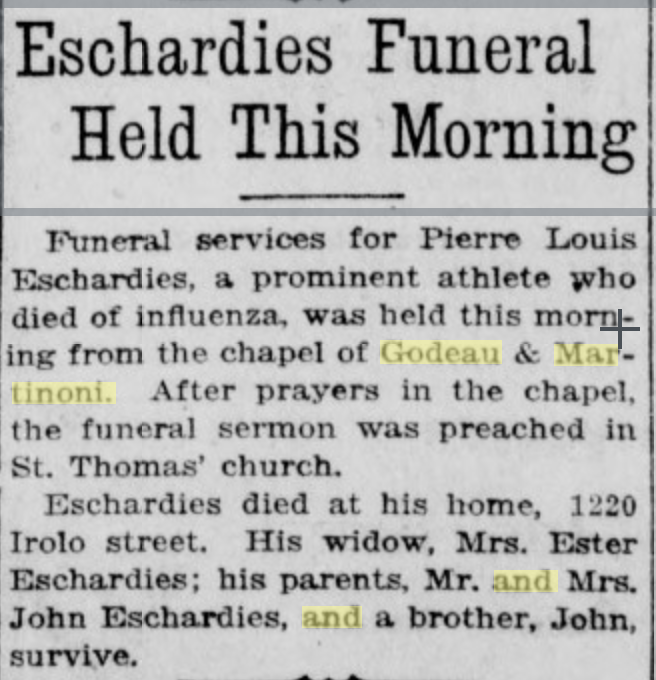Le Guide Français claims that Edouard Amar's name "was once synonymous with San Pedro". I suspect this is a slight exaggeration, although I can confirm that he played a significant role in its history.
Like so many other French immigrants in Southern California, Edouard was a sheep rancher, raising tens of thousands of sheep on Rancho Alamitos while building some of San Pedro's earliest bungalows and developing Pacific Avenue's commercial district. In fact, a residential street in northeastern San Pedro still bears the name Amar Street and the San Pedro News Pilot dubbed him "the Father of Pacific Street".
Amar was well-liked; he was the Grand Marshal of the annual Bastille Day celebration in 1889, the one hundredth anniversary of the French Revolution. In 1889, San Pedro was relatively remote, much smaller than it is now, and technically not part of the City of Los Angeles (which didn't absorb San Pedro until 1909).
Amar's accomplishments sadly didn't shield him from tragedies. His first wife Marie Garineaux died at the young age of 32 in 1887, leaving Edouard to raise their two-year-old daughter Irma.
Edouar remarried the following year, this time to Josephine Boisserand, who hailed from his Alpine hometown of St. Bonnet.
By 1895, the Amars had lost three babies to croup - Edouard at one year, Emmanuel at one month, and Henri at nine months. Leon and Eloi survived infancy.
Leon was a bright, promising student who played cornet in the Angel Gate youth band, served as president of the Fifteenth Street School's literary society (Fifteenth Street School, which is now an elementary school, also housed San Pedro High School at the time), and began attending Santa Clara College in San Jose at seventeen.
Unfortunately, Leon was also diabetic, and diabetes was much harder to treat in the early twentieth century than it is now. His health took a turn for the worse in 1912, and in September of 1913, his worsening condition resulted in being taken to Sisters' Hospital (aka St. Vincent's), then located in Echo Park.
Leon's surviving siblings were summoned. Irma, by this time married and living in San Francisco, could not get to Los Angeles in time to say goodbye to her youngest brother. Eloi, who was in Imperial County at the time (Edouard owned a ranch in Brawley), was also unable to get to the hospital quickly enough. Leon's remains were handled by Godeau & Martinoni, with a funeral at the Plaza Church and interment at Calvary Cemetery. Six of his schoolmates served as pallbearers.
 |
| 1938 press photo of Eloi Amar |
Eloi was a football star at St. Vincent's College (Loyola Marymount University), spent a year studying in Europe (picking up French, Spanish, Italian, and even Basque), raised sheep with his father and cattle on Catalina Island (of which he was general manager under the Bannings and the Wrigleys), got into the mercantile business, and was organizer and president of the San Pedro Golf and Country Club. He was a very popular man about town in San Pedro; hardly any organization didn't boast Eloi or his wife Bessie as a member.
Eloi eventually became president of the Harbor Commission. It would prove to be his downfall - at least temporarily.
Dr. Geraldine Knatz has a great write-up on Eloi's alleged misdeeds, so I won't rehash it here. TL;DR: gambling.
But don't feel too bad for Eloi. While he was found guilty, he soon landed a job as General Manager of the Long Beach Harbor Department and got his revenge on Los Angeles by shifting as much business as possible to Long Beach, which was flush with oil money at the time.










